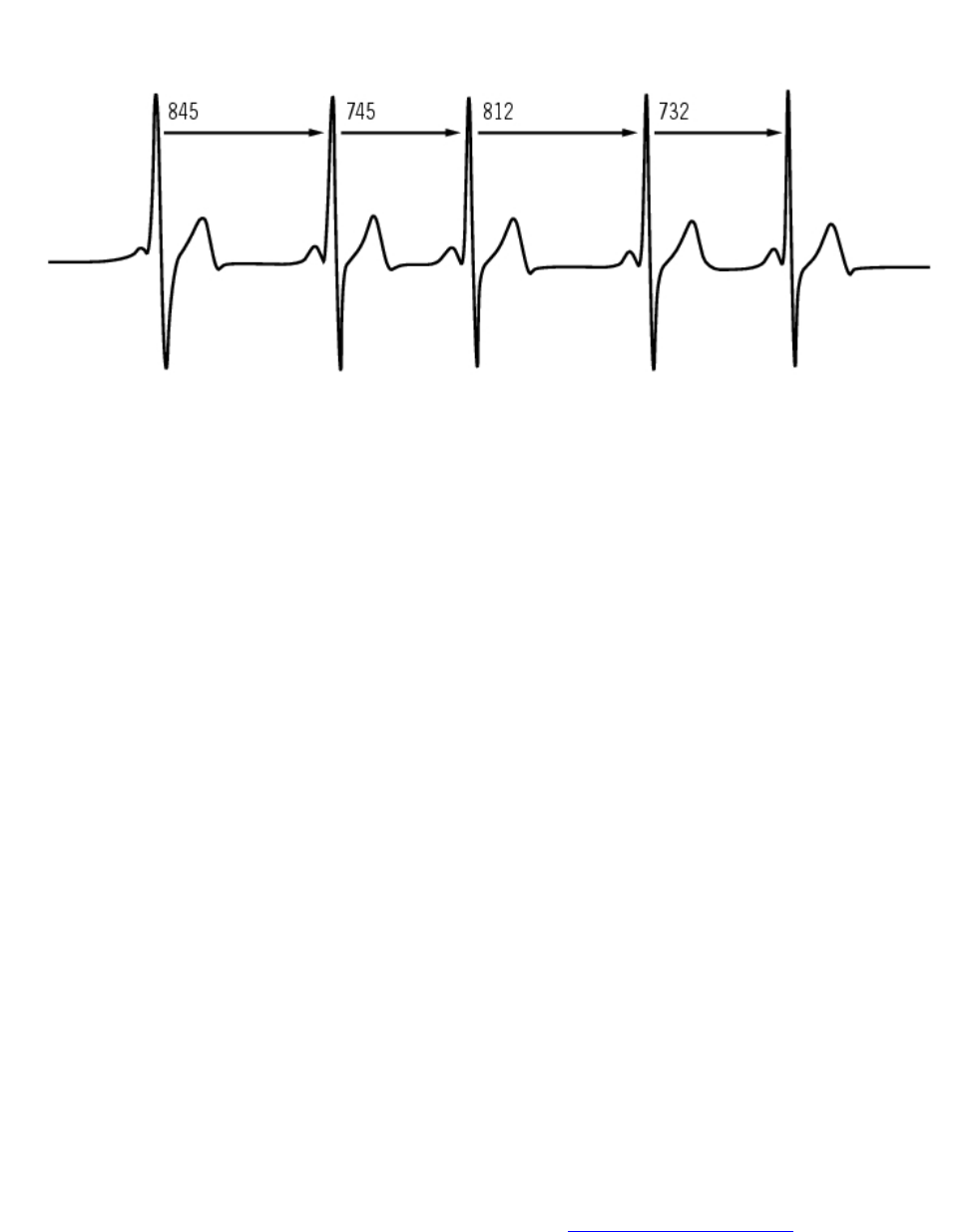
Heart Rate Variability
Heart rate varies with every heartbeat. Heart rate variability (HRV) is the variation of beat-to-
beat intervals, also known as R-R intervals.
HRV indicates the fluctuations of heart rate around an average heart rate. An average heart
rate of 60 beats per minute (bpm) does not mean that the interval between successive
heartbeats would be exactly 1.0 sec, instead they may fluctuate/vary from 0.5 sec up to 2.0
sec.
HRV is affected by aerobic fitness. HRV of a well-conditioned heart is generally large at rest.
Other factors that affect HRV are age, genetics, body position, time of day, and health status.
During exercise, HRV decreases as heart rate and exercise intensity increase. HRV also
decreases during periods of mental stress.
HRV is regulated by the autonomic nervous system. Parasympathetic activity decreases heart
rate and increases HRV, whereas sympathetic activity increases heart rate and decreases
HRV.
R-R Recording
R-R recording rate saves heartbeat intervals, i.e. intervals between successive heartbeats. This
information is also shown as instantaneous heart rate in beats per minute in recorded samples.
When recording every single interval, extra systoles and artefacts can also be seen. We
recommend using contact gel (ECG gel) to optimize contact between the skin and the
transmitter. Readings interpreted as incorrect in the heart rate data can be adjusted and
corrected with the Polar Equine software.
Polar Article Library
For more facts and know-how to enhance your riding, visit www.polar-equine.com.


















